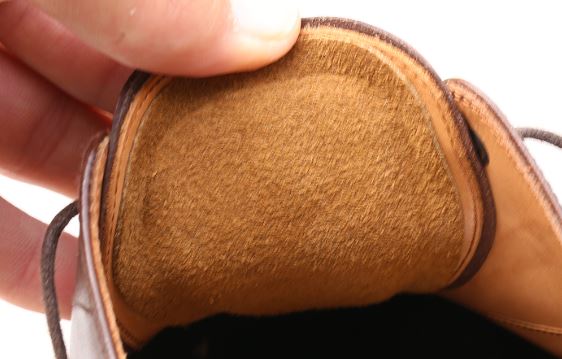The Overlooked Importance of Caring for Shoe Tongues
When it comes to maintaining leather shoes, attention is often paid to the most visible areas: the toe cap, vamp, and heel. However, some less obvious parts are frequently neglected, despite playing important roles in the overall condition and appearance of the footwear. Among these is the shoe tongue—a section that tends to be forgotten but benefits greatly from regular care.
While the sole edges and the seam where the sole meets the upper have received their share of attention in shoe care discussions, it’s time to shift focus to the tongue, an area many unintentionally skip during polishing routines.

Why the Tongue Deserves Regular Maintenance
The tongue may not be exposed to direct scuffing or moisture as frequently as other parts of the shoe, but this doesn’t mean it can be ignored. The tongue, particularly in leather shoes, is subject to consistent pressure and friction from the laces. Over time, this friction can cause the leather to dry out, leading to cracks or stiffness that reduce both comfort and durability.
Additionally, neglecting to treat the tongue with shoe cream or conditioner can cause uneven aging. Leather that isn’t moisturized will eventually take on a lighter, worn-out appearance compared to the rest of the shoe. This is particularly noticeable with darker shoes, where a dry tongue stands out sharply against a well-maintained upper.
Derbies vs. Oxfords: Accessibility Matters
The design of a shoe affects how easy it is to care for its tongue. In derbies, which have open lacing systems, the tongue is easy to reach, and it often receives incidental treatment during routine polishing. As a result, it usually stays in relatively good shape without too much extra effort.
Oxfords, on the other hand, present a challenge due to their closed lacing. The tongue is tucked more tightly beneath the eyelets, making it less visible and harder to reach. This leads many to skip it during daily care routines. However, just because it’s hidden doesn’t mean it’s immune to wear. In fact, the snug fit of oxfords means more contact between the tongue and the laces, which can accelerate deterioration if left untreated.

Simple Steps to Care for the Tongue
Despite the inconvenience, maintaining the tongue of your shoes isn’t a difficult task. It does, however, require a small bit of extra effort. Start by removing the shoe tree to allow better access. For oxfords, it may be helpful to loosen or remove the laces if they block the tongue too much.
Use a soft cloth wrapped around your fingers to apply a small amount of shoe cream—just enough to condition the leather without creating buildup. If you prefer using a brush, that works too, but make sure it’s small enough to reach under the lacing.
When it comes time to buff the leather, skip the standard polishing brush, which likely won’t reach the tongue well. Instead, use a nylon polishing cloth, which is ideal for bringing out a shine in tight areas. This step is usually best done at the end of your polishing routine, once the rest of the shoe has been treated and waxed.
Final Thoughts on an Easy-to-Overlook Detail
Giving your shoes a consistent, comprehensive care routine doesn’t require much extra time—it just takes awareness of the details that often go unnoticed. The tongue is one such detail. Treating it with the same respect as the rest of the shoe helps ensure long-term durability, a uniform appearance, and greater comfort during wear.
Next time you reach for your polish and cloth, take a moment to check on your shoes’ tongues. A few seconds of attention here can prevent years of wear and imbalance down the line.
Read Also: When to Replace Your Athletic, Walking, Running, or Exercise Shoes
FAQs about Polishing Shoe Tongue
Why is the shoe tongue often neglected during polishing?
The tongue is less visible and harder to access, especially in shoes with closed lacing like oxfords, so many people unintentionally skip it during regular maintenance.

What problems can occur if the tongue is not cared for?
Neglecting the tongue can lead to the leather drying out, increased friction damage from laces, and visible color mismatches compared to the rest of the shoe.
How does shoe design affect tongue care?
Derbies with open lacing offer easier access to the tongue, making maintenance simpler. Oxfords with closed lacing make it more difficult to reach, often leading to neglect.
What products should be used to care for the tongue?
A small amount of shoe cream is recommended to condition the leather. Wax polish isn’t necessary and may not benefit this area.
What tools are best for polishing the tongue?
A cloth wrapped around the fingers or a small brush works well for applying cream, while a nylon cloth is ideal for buffing and finishing.
When should the tongue be polished during the shoe care routine?
It’s best to apply cream to the tongue after removing the shoe tree and before final buffing, ideally finishing it with a nylon cloth after waxing the rest of the shoe.







